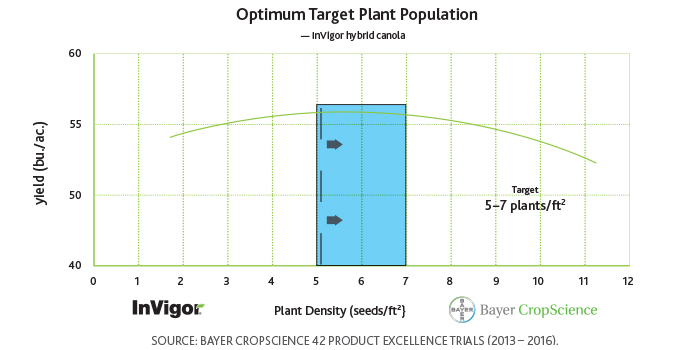Traditionally, Western Canadian farmers have seeded canola at a rate of five pounds per acre.
While many producers have had success with that approach, it doesn’t always create optimal plant stand densities.
By taking a closer look at the canola hybrids you’re working with and better calibrating seeding equipment, you can take full advantage of important resources, such as sunlight, moisture and nutrients, and realize your canola’s true potential.
“Five pounds per acre has been the common standard for a very long time, but every seed lot is different,” said Beckie Gyorfi, PAg, a Co-op Grow Team Member in Cupar, Sask.
“If your seed is bigger, then you may not be putting enough seeds down to get the correct plant establishment.”
Every seed lot is different
Establishing your seeding rate strictly based on weight (lb. per acre) is risky, because different seed lots have different thousand-seed weights (TSW).
For example, a one-kilogram sample from a seed lot with a TSW of 5.7 grams might contain 175,000 seeds. However, a one-kilogram sample from a lot with a smaller TSW of 4.4 grams might contain 225,000 seeds.
Assuming germination and survivability rates are the same — and that one seed equals one plant — planting heavier seed based strictly on pounds per acre will result in less seeds placed and, ultimately, fewer plants.
“It’s really important for growers with a larger seed lot to be seeding a little bit heavier,” said Gyorfi.
“If, all of sudden, you get cutworms, strong winds or frost that damages the plant, you’re not going to have the proper amount of plants out there. That can affect your yields significantly, especially if you get all the way down to two or three plants per square foot.”

Target big yields
As you prepare for spring, target a plant population of five to seven plants per square foot. In most conditions, this can be achieved by seeding 10 seeds per square foot, assuming an average survivability of 50 to 70 per cent.
- Check your seed tag and know the TSW of your canola hybrid.
- Calculate your optimal seeding rate and calibrate your drill accordingly.

- Conduct plant counts and keep records to better understand the seed survivability on your farm.
“It does make a difference,” said Gyorfi. “There are also some growers who are adjusting down when they realize that their seed lots have a lower thousand seed weight. They’re taking advantage of this and being more cost effective by seeding a little bit lighter if they can.”
There are several factors to considering when determining seeding rates and seed survivability on your farm, including crop residue, soil temperature, seed depth, speed of planting and fertilizer placement. Your Co-op Grow Team agronomist can help you determine the right plan for your farm.

